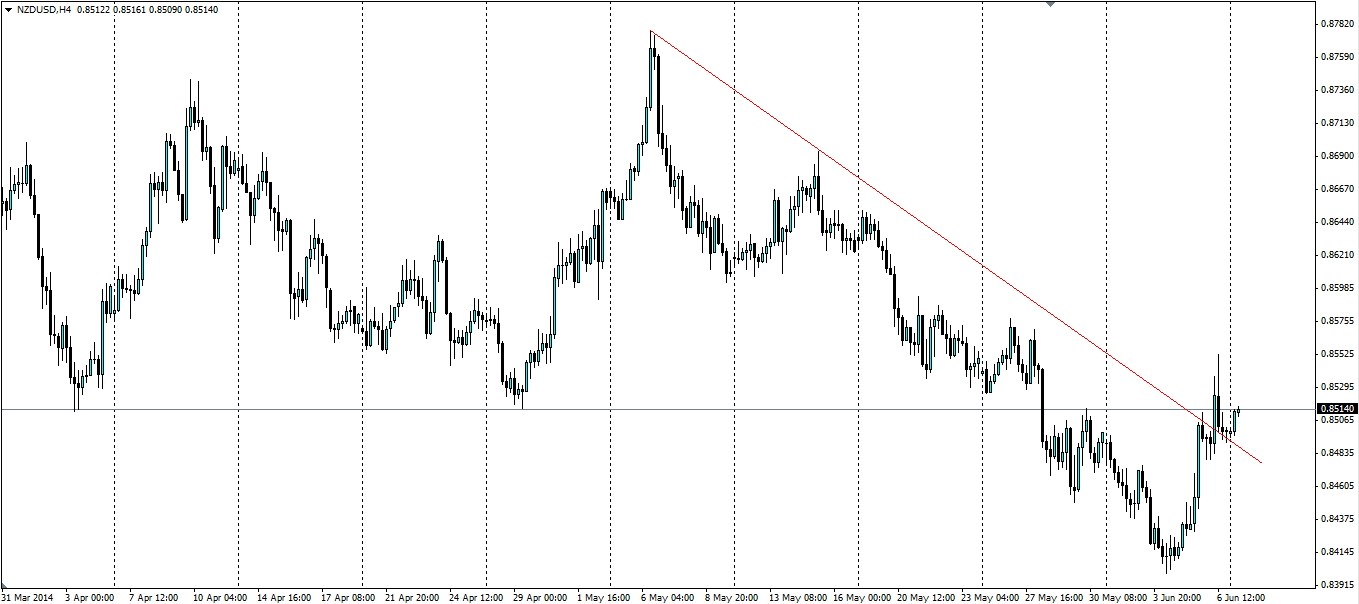A waning commodity price index and business confidence combined with a booming house price index and net migration has put the RBNZ into an increasingly tight spot. The Interest rate will rise, that much is for certain, but the kiwi will react to the language the RBNZ employs.
The RBNZ has said it is targeting a neutral rate over the next two years. This is a rate level that is neither stimulating the economy, nor looking to rein it in. The RBNZ believes a 200 point rise from the historical low of 2.5% to 4.5% would result in a neutral rate and act to prolong the expansion at sustainable levels for as long as possible. So it should be no surprise that further rate rises are on the cards, raising it from a stimulating position, given the strength of the local economy. But what exactly a neutral rate is remains to be seen.
The Reserve Bank of New Zealand (RBNZ) is due to make a decision on the Official Cash Rate (OCR) on Wednesday. They previously signalled consistent rate rises over the course of the year totalling 100 basis points, and have so far raised it 50bp. The market is currently pricing in a 91% chance of another 25bp hike this week, up from 82% just after the last rate hike. But are we likely to see further rate rises this year and next? And what will the RBNZ say after they raise rates this week?
Six weeks ago, after the RBNZ raised interest rates for the second time this year, Governor Graeme Wheeler said: "Spare capacity is being absorbed and inflationary pressures are becoming apparent, especially in construction and other non-tradable sectors". This is not likely to have changed. We haven’t seen inflation figures out since then, but RBNZ’s own inflation expectations were raised from 2.3% to 2.4% at the end of May. The construction sector may have felt the effects of the raised interest rates, but this was hardly a surprise, so any new projects would have factored in increased borrowing costs some time ago. The rebuild of Christchurch is still trucking along and will go ahead regardless of interest rates, so price pressures on building materials will remain for a long time.
Governor Wheeler also said "The speed and extent to which the OCR will be raised will depend on economic data and our continuing assessment of emerging inflationary pressures, including the extent to which the high exchange rate leads to lower inflationary pressure," and went on to say "the bank does not believe the current level of the exchange rate is sustainable." The exchange rate has fallen a bit since then, down from 0.8606 to 0.8511.

The economic data the RBNZ will be looking at will include commodity prices. ANZ’s Commodity price index has fallen -2.2% from last month, having already fallen -4.0% from a month before. Dairy prices continue to lead the way down and this may take some pressure off the RBNZ to raise rates later in the year as dairy is New Zealand’s largest export. Lower prices lead to lower export receipts and lower inflationary pressures.
ANZ Commodity Price Percentage Change

The big talking point will no doubt be house prices. The RBNZ is trying to cool the property market and avoid a bubble by raising interest rates and it seems to be having an effect; Home Quotable Values are down from a peak of 10.0% year on year growth in January to 8.2% in May from a year ago. This is, but is still too high as far as the RBNZ is concerned, so depending on the importance Governor Wheeler puts on this, will give the market an insight into how many more rate rises to expect this year.
The RBNZ is in a tricky spot. They need to raise rates to get back to a “neutral rate”, but falling commodity prices will reduce inflationary pressures, which is offset by a robust housing market which needs to be cooled. The rhetoric will be the key to future expectations from the RBNZ and should be watched closely.
